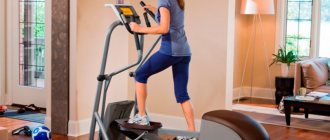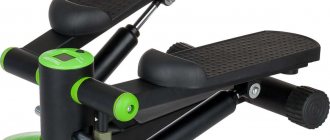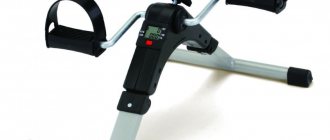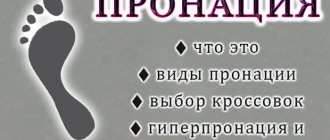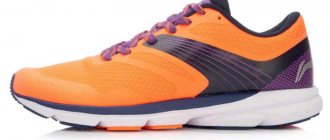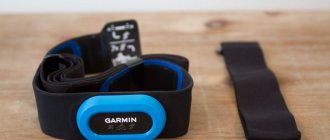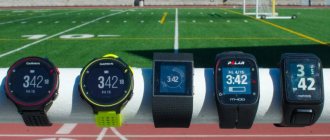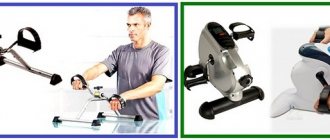Flat feet is a serious problem that, according to statistics, every second adult and child in our country faces. With it, the legs gradually lose their bending volume, the shape of the arch of the foot changes, and deformation (curvature) of the feet occurs. If corrective treatment is not started in the initial stages, then many changes may subsequently become irreversible.
In this article we will talk about factors that can provoke the development of flat feet, about the stages of the disease and how the right orthopedic shoes can correct existing signs of deformation and prevent further pathological changes.
Reasons for the development of flat feet
Flat feet very rarely develop out of the blue. Typically, such unwanted deformations occur due to:
- wearing uncomfortable, low-quality shoes;
- low physical activity.
- being overweight;
- constant increased loads on the feet.
Flat feet develop more often in people who are used to walking in low-toe shoes on flat surfaces (city asphalt) and much less often in those who find time to periodically walk along rocky paths, grass, and sand barefoot. In women, the problem often arises as a consequence of a significant increase in body weight during pregnancy.
To prevent serious disorders in the functioning of the musculoskeletal system, it is important to respond to the first “bells” as early as possible and contact a specialist who will help you choose the right shoes for flat feet and recommend effective corrective exercises.
Characteristic signs of flat feet
To check how correctly a child’s foot is forming, you can use this home diagnostic method: lubricate the baby’s feet with paint or rich cream and ask him to take a step on a clean sheet of paper. This way you will get a clear imprint of the child's foot and will be able to analyze it for any deformities.
If the characteristic notch at the inner edge of the foot on the print occupies less than half the width or is displayed entirely on the sheet, then you need to contact a specialist as soon as possible to confirm the diagnosis and receive recommendations for correcting the defect.
Attention! Until the age of 3, this diagnostic method does not make sense to use, since children still have an impressive fat pad in the sole area.
In adolescents and adults, flat feet can be suspected if the legs get tired quickly, after physical activity there is pain in the feet, the ankles constantly or periodically swell, there is a feeling that the width and length of the feet have increased.
“Insoles and shoes affect the shape of a child’s foot in the same way as a hat affects the shape of his head.”
– All parents of babies are tested by a difficult struggle between a hard back and a soft sole. Should shoes have a hard heel when a child learns to walk? Or are Western doctors right when they say that you need to walk barefoot?
– The human foot is designed for walking barefoot. Humanity has been wearing shoes in the current sense of the word for the last 500 years, probably, and in Russia it’s been like this for about 200 years. Until recently, all of Russia walked in bast shoes, they didn’t have any backs - neither high nor low - and people did not die out from flat feet .
The formation of the arch of the foot has nothing to do with shoes at all.
At the Galen Clinic we use ancient Greek statues as an example: the ancient Greeks did not have shoes! Look how beautifully formed their feet are! The arch of the foot is a genetically programmed element of its anatomy. Biologically, the foot is adapted only to walking barefoot
One of the great modern American podiatrists said: “Insoles and shoes affect the shape of a child’s foot just as a hat affects the shape of his head.” That is, no way! It is definitely impossible to change the shape of your feet for the better with shoes!
Where did this high back story come from? There was an empirical postulate that if you set a certain pattern for the growth of the foot in the form of a high heel or arch support, then the foot will develop along this pattern, but this has not been confirmed by any research.
To roughly imagine the analogy, we can recall the story of mustard plasters and jars. If 30 years ago a child started coughing, a pediatrician would come to him and prescribe him mustard plasters or cups, or both. If now a pediatrician comes to your coughing child and prescribes mustard plasters or cupping, then next time you will call another pediatrician.
You don’t wonder why mustard plasters or cans disappeared. But they disappeared because their effectiveness has not been confirmed by anything, and 30 years ago this effectiveness was not discussed at all; it was a priori believed that mustard plasters and cups would be useful for a coughing child. Medicine is changing, it is changing based, first of all, on the principle of evidence.
If you look at your palm, you will see that there is a notch on your palmar surface, the so-called “arch of the hand.” Have you ever worn gloves with high, hard cuffs? No? How did your hand form if you never wore hand supports? Where did you get this dimple on your hand? You are evolutionarily programmed to have it. The size of this notch is different for everyone. I have it a little more, you have it a little less.
Little of! As a rule, if we put a hard glove on a hand (as my colleague cites in the article), we will significantly worsen the function of the hand, for example, in a hard glove you will not be able to draw or sculpt.
It's highly likely that I have a slightly larger arch than you. It is possible that you have a tendency to flatten the arch of your feet, do you personally?
- Maybe. And children have it.
– Children have a slightly different story. When children are born, they have two fat bodies: one on the cheek to facilitate sucking, the so-called “Bishat fat pad”, the other is the fat pad on the foot, this is a built-in arch support that gradually dissolves. If you look at a newborn baby's foot, it is slightly arched and springy. And this “built-in arch support” is not needed to form the arch of the foot, the arch of the foot is formed according to other laws, it is needed to soften the load. If this lump experiences excessive pressure, it may dissolve faster.
But there is a nuance regarding arch support in shoes. Can you imagine a car steering wheel? When you take the steering wheel, it is more comfortable for you when it is not smooth, but has a texture on it. It follows the shape of your brush. It’s a similar story with shoes – the most comfortable shoes are those that, to one degree or another, follow the topography of your foot, so good, comfortable, convenient shoes always have a plantar surface lining. There, as a rule, there are instep supports. The same applies to sports shoes, on which the result of competitions largely depends - they always have an instep support. But not so that the athlete’s arch is formed, but so that the foot feels as comfortable and stable as possible.
There is one more nuance. In children under three years of age, foot propulsion is not sufficiently developed. Children under three years old walk as if waddling. There is an English word that is typical for children from one to two - two and a half years old, this word toddler, roughly translated as “stomper,” that is, a child who does not yet walk confidently. There is no single word in the Russian language that would describe such a gait. In these children, indeed, due to their age, the function of the ankle joint is not yet sufficiently formed.
I call this gait “bear-toed.” Slightly waddle, swaying from side to side
So these kids, at least in theory, have some justification for wearing taller shoes to improve stability. If a child walks unsteadily barefoot or in low-backed shoes, and you put high-backed shoes on him, and he walks more steadily in them and falls less, then for this situation there is at least some biological basis for high-backed shoes - for situational improvement of resilience. The maximum when this is biologically necessary is up to three years.
Unfair marketing tactics
– So, it’s all the same as with cans and mustard plasters? But orthopedic shoes are expensive!
– I wouldn’t like to suspect someone of using some dishonest marketing tactics, but when I come to the store to buy shampoo for myself, and there are two shampoos next to me – one regular, inexpensive, and the other for preventing hair loss – and I have small problems – my hand will reach out to the one for improvement, this is psychology. Although, as a doctor, I understand that it does not improve anything, because if it were so, then the balding male half of humanity would not suffer from complexes.
I completely agree! Orthopedic shoes are needed for children with orthopedic pathology! Nobody prescribes glasses for prevention! Here is another article on our website https://www.galen.by/articles/46-pervaya-obuv-rebenka
So my mother comes to the store to buy shoes, and next to them there are two pairs - one pink, light, comfortable - ordinary, and next to them - shoes that are tall, heavy, scary and expensive, but it says on it that they are for the prevention of flat feet.
Most likely, the hand of a modern Internet-addicted mother will reach for those shoes on which it is written that they are preventative. Consciousness works like this: I want to do everything for my child before it’s too late. This hypothetical “before it’s too late” concept works very well. This is a large marketing niche where consciousness can be manipulated.
And in general it is a question of trust. If, relatively speaking, in Finland a doctor tells a patient that this and that needs to be done, then the patient does it. If in Russia a doctor says that something needs to be done, then 99% of patients, especially mothers, will go online and double-check his opinion. Is it true?
- Certainly!
– Your answer “of course” is very revealing. I'm not even talking about the degree of mutual distrust, this does not concern anyone personally, this concerns the atmosphere. The degree of mistrust in society is too great.
– By the way, now a lot of things are passed from child to child, this is in any country, including shoes. Is it normal to wear shoes after having another baby?
– Shoes are clothes for the feet and nothing more. When you buy panties, do you go to the doctor to consult? Sorry for the question. Probably not. And there are so many fancy things with shoes!
And everything is very simple, shoes are clothes for the feet. The criteria for choosing shoes for children are simple - comfort, lightness, beautiful appearance and true to size.
If you take shoes anywhere, even from a trash heap, and they meet these criteria, then do what you want with basic hygiene. In Russia, and not only in Russia, it is customary that from generation to generation the younger ones wear after the elders, including shoes. Therefore, there is no need to complicate simple things.
Which pair to choose at different stages of deformation?
The choice of orthopedic product directly depends on the degree of flat feet. When identifying deformities, orthopedists recommend:
- Stage 1-2 (the first deforming changes, the legs get tired quickly, slight swelling may occur) - suede, nubuck products with orthopedic insoles with a small wide heel, with a tight heel, a round or square toe, lacing to control the density of the transverse girth; special inserts, finger holders; rejection of rigid wedges and platforms;
- Stage 3 (pronounced changes that can be detected even with a cursory visual examination) – constant wearing of orthopedic shoes, the choice of which must be monitored by a specialized specialist.
Run faster: with support
The series is represented by a high-speed competition model without “carbon” for runners with overpronation.
ASICS Gel-DS Trainer 26
- Weight: 241 g (M), 190 g (W)
- Heel-toe drop: 8 mm (M), 8 mm (W)
- Purpose: running at a fast pace
- Surface: asphalt
Gel-DS Trainer 26 is a time-tested speed model with a solid set of technologies.
There is a small gel insert in the heel for shock absorption, a Duomax anti-rolling system, a plastic element in the Propulsion Trusstic midsole for push-off and stabilization, and an integrated heel cup.
Buy running shoes ASICS Gel-DS Trainer 26
The foam used is Low Density FlyteFoam for better responsiveness. Reflective elements on the knitted jacquard mesh increase the runner's visibility at night.
Compared to the previous version, the weight in the men's version has decreased by 14 grams, and the plastic heel cup is integrated into the fabric.
The end result is the same great classic fast shoe for overpronators.
Women's shoes for flat feet
Flat feet can cause a woman a lot of inconvenience, because following fashion trends and the extremely unhealthy principle “beauty requires sacrifice,” they buy a pair of high heels, which only aggravates problems with the limbs.
When diagnosing a disease, experts recommend at least temporarily abandoning extremely high stiletto heels, but not going to extremes by choosing a product with a flat, inflexible sole. The optimal solution would be to buy medium-height shoes or sandals with heels up to 5 cm. When choosing a model, it is better to choose a pair made of soft leather, suede, nubuck, on the inside of which there are no seams that put additional pressure on problem areas that provoke the development of soft and hard calluses .
You should not ignore the disease at stages 1-2, because it is during this period that you can get by with “little blood” and return your feet to their normal shape. At the last stages, the deformations are already stable and it is almost impossible to correct them.
Relationship between bite and human posture
– Are the teeth, their correct/incorrect arrangement, and the spine connected?
– This is an interesting question. Indeed, there is a definite evidence base for the correlation between bite and human posture. There is such a discipline as posturology, it is not entirely medical, but rather biological. Posturology speaks not so much about diseases as about variations in normal human posture. Posturological studies show that changes in occlusion due to orthopedic interventions can affect a person's posture. It is difficult to say today how much this all correlates with the criteria of health or illness. These are largely empirical and biological arguments.
Posturology, by and large, is a biological discipline about healthy people, while medicine deals with diseases. Changes in posture rather relate to the individual characteristics of a person; they cannot, at least at the current level of development of medicine, be attributed to diseases.
– Do orthodontists know this?
– Orthodontists know that changes in bite can change posture. But the next question is: what does a change in posture bring? For example, all traumatologists know that hair grows under a cast; this is an absolute biological fact. After being under a cast for a long time, quite thick hair grows on the leg or arm, usually black, this is especially upsetting for girls and young women. We don't know why this happens, but it's a fact.
– What if we put a cast in place of the bald spot?
– That was my first thought when I saw this in residency! It hasn’t occurred to anyone to do this yet; it’s technically difficult. So, we know that this pattern exists. We don’t know why it is, but we also don’t know how important it is for a person. After changing the bite, the posture changes. We don’t yet know how important this is for human health. Further research in this area is certainly needed.
Men's shoes for flat feet
Flat feet are traditionally even more common in men than in women. You can find a variety of men's orthopedic shoes on sale. When going to the store to choose corrective shoes or boots, we recommend that you be guided by the following criteria:
- flexible sole made of materials with a special structure;
- shoes should provide good fixation and uniform load distribution;
- matching pair to the size and individual characteristics of the foot. Shoes or boots should be moderately loose in length and fullness;
- the presence of special insoles of an anatomically correct shape, providing good shock absorption when walking;
- The choice of models with a wide toe is welcome. This solution helps prevent circulatory problems in the feet.
Special everyday and training shoes for flat feet may not look too different from ordinary ones, but their price, for obvious reasons, can be significantly higher.
Ergo backpack, scooter, balance bike, snowboard
– Ergo backpacks – what are they? To what extent can they be used?
– There is no medical data that would indicate the benefits or harm of slings. In utero, the child is in a monstrously crooked position; at the moment of birth, he straightens his arms, legs and back, nothing happens to him, despite months of being in a curled position. From the point of view of common sense, it seems to me quite difficult to spoil something for a child with a sling. In the same way, our smaller brothers sleep curled up, this does not damage their spine and legs. From a biological point of view, the embryo's position is quite physiological.
- What about swaddling?
– This is a different story, there is just a nuance here. Man, unlike our tailed, hairy ancestors, was rewarded by nature with upright walking. In humans, the position of the hip joint in a standing position and when walking differs significantly from the position in quadripedals, i.e. four-legged animals. A person has a predisposition to hip dysplasia, which occurs with a frequency of about one case per hundred, this is not so small. The position in which the legs are tightly closed is an unfavorable position, which, if there is a predisposition, can contribute to either improper development of the joints, or even, in the case of severe anatomical disorders, hip dislocation.
This is well known from the history of orthopedics, on a cultural-ethnic basis. In Armenia, it is traditional to tightly swaddle children's legs, especially girls. In Africa, it is customary to carry a child on the hip or on the stomach with legs apart. Orthopedists 100 years ago knew for sure that in Armenia there is a very high incidence of congenital hip dislocation, and in African tribes there is practically no congenital hip dislocation.
That is, it is absolutely certain that tight swaddling of the legs in a contracted state contributes, statistically, to an increase in the incidence of hip dysplasia and hip dislocation.
This does not mean that this will happen in a particular child, but if the child has a predisposition, then tight swaddling will contribute to the implementation of this predisposition.
– Won’t your crooked legs get better?
– Crooked legs will never be corrected by swaddling, absolutely. This is another story, it has nothing to do with swaddling, but this is a long story, it is not for this conversation, because it needs to be drawn.
– Scooter, balance bike – is there any benefit? Is a trampoline fun without harm?
– Regarding scooters and balance bikes: children do not have any medical prejudice towards these types of activities. The only criterion is common sense and safety in terms of injury. They are no more dangerous than other devices that children ride on. It must be remembered that the likelihood of injury, direct damage, is higher on scooters and balance bikes than if the child was just walking along the path. You need to be aware that the faster the child moves, the harder his nose will hit the ground when, sooner or later, he will fall anyway. It's simple physics. A child should have things in life that bring him joy, but in everything there should be common sense and adult control.
As for the trampoline, everything is much worse here, from a medical point of view. 10 years ago it was almost impossible to buy a personal trampoline. Now they have become cheaper, more accessible, any family can afford to buy a home or outdoor trampoline. This led to the coining of the term “trampoline fracture” in Western medical literature. These are fractures of long tubular bones, usually the tibia, with virtually no displacement due to compression of weak bone tissue. Jumping on a trampoline, especially long ones, is potentially dangerous.
– What about jumping walkers?
– Walkers and jumpers are more of a kind of entertainment for a child. From a developmental point of view, they do not bring anything to the child. Their importance or danger for crooked legs has been greatly exaggerated. This is entertainment for the child, an opportunity, several months before he begins to walk on his own, to move in space without distracting the attention and time of the parents, nothing more.
But there are nuances. Several years ago, the German Association of Pediatric Traumatologists recommended extreme restraint in the use of runners and walkers for the reason that children in walkers can move quite quickly. Studies have shown that quite often children drive into tables, bedside tables, and fall down stairs.
– Even now they like to put a special circle around the child’s neck in the bathroom, is that okay?
- Also common sense. If everything happens under the control of the parents and in front of the parents, then, in my opinion, there is no likelihood of a negative effect from this circle. This is an exclusively utilitarian thing for solving a specific problem.
– Snowboarding is probably the same thing, let’s not dwell on that.
– Snowboarding is a highly traumatic sport. Whether or not to put a child on snowboarding and skiing should be a conscious decision of the parents with full understanding that this is a sport with a high risk of injury, although, of course, it gives a lot of positive emotions. Michael Schumacher, having overturned his car so many times, ruined his life and career just on some unfortunate skiing.
Children's shoes for flat feet
Has your child been diagnosed with flat feet? In childhood, returning the feet to their normal shape is easier than fighting the disease in adulthood. To choose the right orthopedic shoes, you should first enlist the help of an experienced specialist. For successful correction, you need to bring your baby for preventive examinations to an orthopedist at least once every 3 months.
It is optimal to order corrective shoes in a special salon, where craftsmen will take individual measurements and make the right pair to order. Orthopedic shoes, boots, sandals for children must meet the following criteria:
- heel no more than 2 cm;
- flexible sole;
- laces or Velcro;
- tight back;
- high-quality instep support;
- anatomical insoles;
- breathable upper material.
To get the best results, it is recommended to combine wearing special shoes with doing exercises to strengthen muscles and attending therapeutic massage sessions.
Children's shoes for the prevention of flat feet
Prevention is easier than treatment - this principle should be followed by parents who want to protect their child from a disease that can be considered one of the most common ailments of modern people.
To avoid problems with the musculoskeletal system, it is important to buy the right children's shoes when the baby is just learning to walk. To begin with, you should get slippers made of soft, breathable material that can be adjusted to your feet (with buckles, Velcro, laces). The sole should bend well.
The maximum height of the heel in childhood should not exceed 1.5-2 cm. This element should be wide, stable, and occupy at least a third of the area of the sole. Buying boots with a wide toe box will prevent deformation of the toes and the appearance of painful calluses. The foot in the shoe should not dangle, moving sideways or backwards.
Run Faster: Blast Series
This series includes sneakers made using lightweight shock-absorbing FlyteFoam Blast foam.
ASICS Novablast
- Weight: 260 g (M), 220 g (W)
- Heel-toe drop: 10 mm (M), 10 mm (W)
- Purpose: running at a slow to medium pace
- Surface: asphalt
The key model of the series, based on the use of FlyteFoam Blast foam in the midsole. This material is so light that shoe creators were able to significantly thicken the sole without weighing down the entire product.
So, in these sneakers the foam layer reaches 32 mm in the heel and 22 in the toe. This provides excellent cushioning, and the FlyteFoam Blast elasticity returns the energy of each step without the effect of sinking.
Buy ASICS Novablast running shoes
It features an integrated heel cup, a jacquard mesh upper and an AHAR Sponge rubber outsole with AHAR+ reinforcements in high-stress areas.
With all its advantages, the model may not be suitable for heavy runners, as well as those who like shoes with good stabilization.
ASICS Dynablast
- Weight: 250 g (M), 205 g (W)
- Heel-toe drop: 12 mm (M), 12 mm (W)
- Purpose: running at an average and fast pace
- Surface: asphalt
These sneakers are a slightly lighter version of the Novablast with a less thick midsole, a knitted rather than jacquard upper, and a 2mm larger drop. Otherwise, the model is similar to the previous one in the review.
Buy ASICS Dynablast running shoes
Slightly lighter and more dynamic, the Dynablast is suitable for regular runs at various speeds for light to moderate weight athletes.
ASICS Roadblast
- Weight: 247 g (M), 210 g (W)
- Heel-toe drop: 10 mm (M), 10 mm (W)
- Purpose: running at a slow pace
- Surface: asphalt
Budget model of the series. Here the FlyteFoam Blast foam is located only in the front part of the sneaker, and a simpler material is used at the back - AmpliFoam, which is not so springy and light.
Buy ASICS Roadblast running shoes
The upper is made of seamless mesh in the men's version, and in knitwear in the women's version. There is an integrated heel cup. The model has a solid rubber outsole. Insoles – technological Ortholite.
The shoe is suitable for beginner runners with neutral pronation and without excess weight for short and infrequent runs.
ASICS Versablast
- Weight: 208 g (M), 179 g (W)
- Heel-toe drop: 10 mm (M), 10 mm (W)
- Purpose: running at a slow pace
- Surface: asphalt
Finally, the most budget model in the line.
Here the signature FlyteFoam Blast foam is combined with simple EVA. The sneaker loses to its brothers in the line in cushioning and transfer of force from the foot to the surface, but it clearly wins in lightness. The men's version in the standard size shows just over 200 grams on the scale!
Buy ASICS Versablast running shoes
A good option for beginner runners and fitness enthusiasts who value minimalism, lightness, and low price in shoes.
What shoes should you not wear if you have flat feet?
After confirming the diagnosis of flat feet, you should immediately review your home shoe collection and stop wearing:
- models with rigid soles;
- shoes with wedges, platforms;
- high-heeled shoes;
- tight pairs with a narrow toe.
Today you can easily choose a stylish pair for any season from the collections of special orthopedic shoes. Such shoes, boots, sandals look no worse than ordinary ones, not endowed with orthopedic functions.
The disease should not be ignored in the early stages. Timely treatment and wearing corrective shoes will help to avoid serious consequences that cause such deformities, restore the shape of the foot as soon as possible and enjoy a full life without flat feet!
Puma x Mr.Doodle
Price : 8,990 rub.
Colorful Puma x Mr.Doodle sneakers will be the highlight of your look. The playful, rich embroidery is inspired by the iconic single-line drawings of London-based artist Sam Cox.
Unusual colors are what is needed for those who are used to standing out from the gray mass. Puma x Mr.Doodle – unisex model, suitable for men and women.
The sneakers are made of 2 materials: artificial and genuine leather. The midsole of the sports shoe makes it incredibly light and soft, which lovers of long walks will appreciate. The kit includes a pair of extra laces, which is very convenient. While some are in the wash, you can put on others.
For reference: sneakers run larger, please consult with the online store managers before purchasing.

